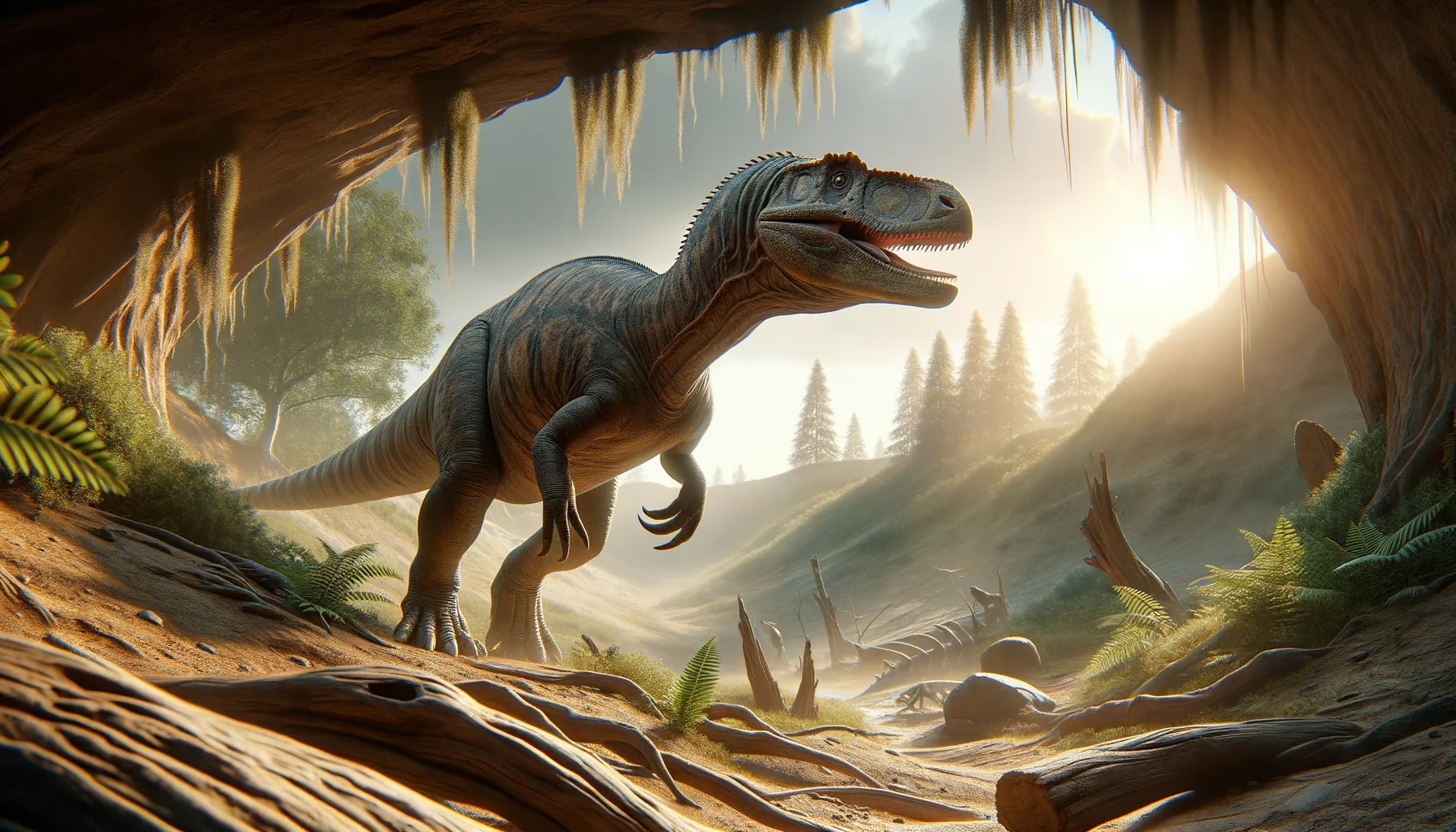
Peltosaurus
The perplexing prehistoric armored lizard.
Period
Cretaceous
Length
Like the height and weight, the length is not clearly established from known fossils.
Height
Height measurements are not precise due to inadequate fossil records.
Weight
Weight estimations are uncertain due to limited fossil remains.
Peltosaurus, though not a dinosaur, was a prehistoric lizard that roamed during the Cretaceous period. Little is known about its exact appearance due to incomplete fossil evidence. Peltosaurus lived in environments that were quite different from those today, and its fossils are usually found in North America. Its name reflects its status as a lizard, and it is often confused in discussions with actual dinosaurs.
Diet
Based on its classification as a lizard, Peltosaurus likely had an omnivorous diet, feeding on plants, insects, and small animals. Its exact dietary habits are unknown due to the scarcity of fossil evidence.
Hunting
As an omnivorous lizard, Peltosaurus would have engaged in opportunistic feeding rather than active hunting. Its movement and hunting behavior are less well-documented, likely consisting of slow pursuit of small prey or foraging for plant material.
Environmental challenges
Peltosaurus lived during a time when environments were changing, which could have impacted available food sources. It likely had to adapt to shifting habitats and competition with other contemporary species. Such challenges may have been mitigated by its armored protection, offering some defense against predators.
Speed
Peltosaurus is actually a prehistoric lizard, not a dinosaur, known for slow, lumbering movement similar to other armored reptiles.
Lifespan
The lifespan details of Peltosaurus remain largely speculative due to limited fossil evidence.
First discovery
Peltosaurus fossils were first discovered in the 19th century, but are not well-documented due to their fragmentary nature.
Fun Facts
- Peltosaurus was not actually a dinosaur but a type of prehistoric lizard from the Eocene epoch.
- This ancient lizard lived around 56 to 33.9 million years ago, long after dinosaurs had become extinct.
- Peltosaurus had a heavily armored body, which helped protect it from predators.
- It is believed to have lived in what is now North America, especially around the central and western regions.
- The name 'Peltosaurus' means 'shield lizard', reflecting its armor-like body structure.
- Peltosaurus was likely a slow-moving creature, relying on its armor for defense rather than speed.
- Fossils of Peltosaurus have been found in association with ancient riverbeds, suggesting it preferred aquatic or semi-aquatic habitats.
Growth and Development
There is little known about the growth stages of Peltosaurus due to the lack of comprehensive fossils. What might be assumed is that, like many reptiles, it grew throughout its life, potentially undergoing a slow process from juvenile to adult form. Environmental conditions and resources availability likely influenced its development.
Habitat
Peltosaurus most likely inhabited regions that offered dense vegetation as well as areas suitable for hunting small prey. It would have thrived in semi-arid environments with access to foliage and insects. The habitat was likely diverse, ranging from forest edges to open plains.
Interaction with other species
Peltosaurus would have coexisted with various species of the time, interacting primarily with small vertebrates and invertebrates. Its armored body could have provided protection against larger predators. Social interactions among conspecifics are not well-documented but likely consisted of territorial displays or breeding rituals.
Natural lifespan
Peltosaurus' natural lifespan cannot be precisely determined due to limited fossil evidence.
Reproduction
While direct reproductive behavior is unknown, it is reasonable to infer that Peltosaurus reproduced in a manner similar to other lizards, possibly laying eggs. The reproductive rituals are not documented, but mating would have involved some form of display or contest for mates.
Social behaviour
Peltosaurus' social behavior remains a mystery with existing fossils, though it might have displayed solitary or loosely social traits akin to modern reptiles. Social interactions may have included basic communication through body language or other signals.
Fossil locations
Fossils attributed to Peltosaurus have been found primarily in North America, particularly in regions with Cretaceous sediment layers. However, exact locations are often not specific due to the rarity and fragmentary state of these fossils.
